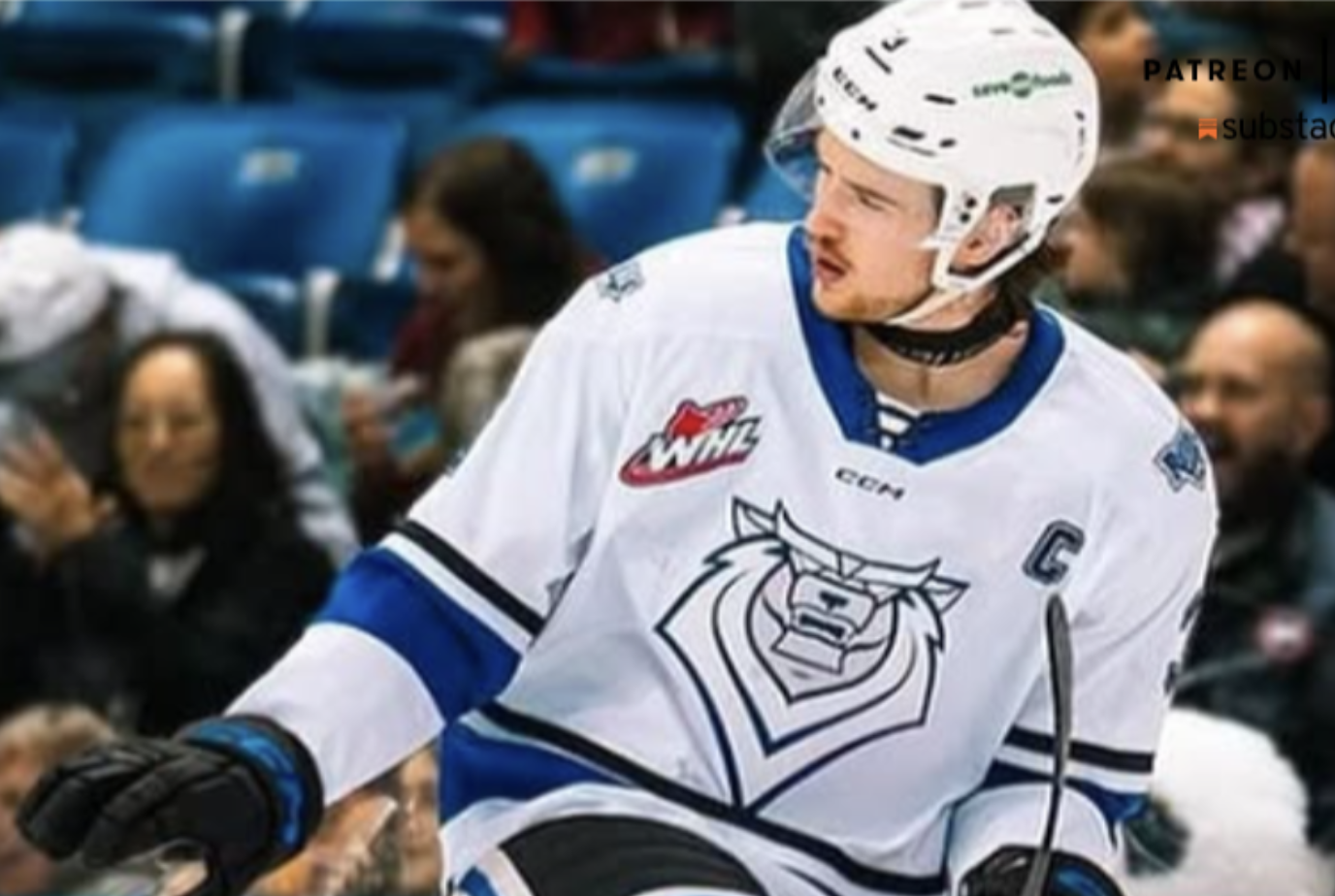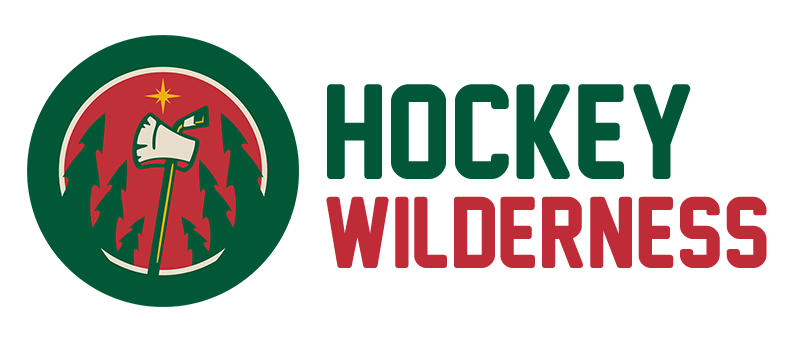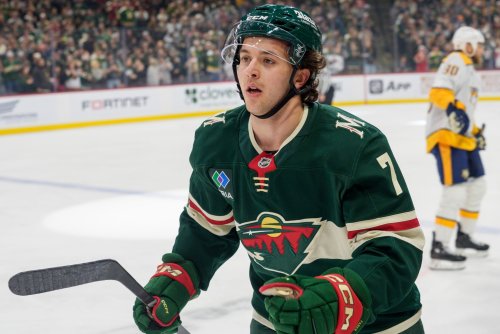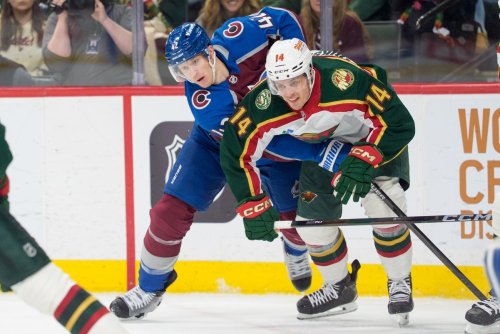
It’s a great time of year for hockey fans to look ahead. The recently completed NHL draft, in which the Minnesota Wild selected five players, provides an opportunity to learn more about the newest additions to the organization.
The team selected two defensemen and three forwards, and I’ll spend some time examining each one in detail in the coming weeks. Yesterday, I shared what I learned about 2nd-round pick, defenseman Theodor Hallquisth.
Today, I’m going to do a deep dive into the other defenseman the Wild selected, 5th-round pick Justin Kipkie. I spent some time watching film on Kipkie to see what I could learn. Here’s what I discovered:
Justin Kipkie
5th round, pick No. 141 (D)
Hometown: Calgary, Alberta
6-foot-4, 193 pounds
Shoots: Left
This was Kipkie’s second time getting drafted. The Arizona Coyotes (now Utah Mammoth) took him in the 5th round of the 2023 draft, but Utah didn’t sign him before June of this year and therefore lost his rights, making him draft-eligible once again.
After watching some of Kipkie’s games from this past season, I’m genuinely shocked that Utah didn’t try to sign him to an entry-level deal. They could have allowed him to continue playing for the Victoria Royals in the WHL, where he has been for the past three seasons, including two as team captain. However, given Kipkie’s recent decision to play college hockey at Arizona State next season, it’s possible that the player chose not to sign.
Regardless, Kipkie has a lot of tools that will translate well to professional hockey, and I think the Wild were wise to take a flyer on him.
I’ll get to some of those tools in a second, but I must immediately note that Kipkie is a slow skater. He has decent top speed, but it takes him a long time to get there, and he loses a lot of footraces as a result. Unlike David Jiricek, who is still working on quick footwork and balance in small spaces and when changing direction, but has a powerful stride and good speed for a guy his size, Kipkie is flat-out slow in most situations.
Kipkie doesn’t have quick feet and can’t rapidly accelerate in any situation. He doesn’t crossover as quickly as you’d like when trying to pick up speed going backwards. Kipkie compensates by shifting his weight to get additional leverage off his foot when gliding between pushes, which, combined with his size and reach, is adequate for staying with most skaters at the junior level.
However, it’s something players will exploit at higher levels. If he gets caught out of position or puck watching, he has difficulty recovering. It’s fair to wonder whether he can improve his skating to a level that makes him capable of defending in professional hockey. He will need to develop exceptional discipline in terms of positioning and taking risks when defending if he wants to advance in the AHL and NHL.
That said, Kipkie has access to a range of professional-level tools that allow him to become a quality pro if he can develop his skating skills. He reads the game well and uses his size and reach to disrupt plays. He’s not overly physical, but is effective at clearing traffic in front of the net and at gaining body position.
He has excellent balance on his edges and a decent turn radius. These tools allow him to keep a good stance in all situations, which is especially beneficial when he has the puck. He has soft hands and pretty good skill for a big defenseman.
Kipkie’s hands and stickhandling, combined with his balance, allow him to release quick, accurate passes from a lot of different stick positions; in his feet, out front, or behind his body, and also when reaching out. These attributes enable him to find passing lanes that aren’t always readily apparent, resulting in him delivering pucks to places where his teammates can make something happen.
Kipkie has above-average offensive instincts and makes good puck moves to try to shake defenders. If they close on him, though, Kipkie has little escapability due to his slow feet. In pro hockey, he’ll need to make quicker puck decisions at the offensive blue line when opponents pressure him, or he’ll turn it over. However, when Kipkie gets into space, he becomes a threat and can dissect defenses with good vision and deception, complemented by a shot that has to be respected.
He has a good release on hard snap shots and wristers. When Kipkie can put his full frame into a slap shot, he can unleash it with great effect. As an all-situations player for Victoria, he produced offense at even strength and on the power play. While he’ll likely never rise to a level where he gets much power play time in the NHL (if he gets there), he can be an effective power play quarterback in the AHL.
Outlook
There’s a scenario where Kipkie never develops as a skater and tops out as an ECHL or bottom-of-the-lineup AHL player. I’m not sure a coach can fully correct his skating deficiencies. Still, suppose they can, and his skating becomes adequate enough not to be a serious liability. We might see a scenario where Kipkie’s very real pro-level tools and large frame enable him to become an NHL defenseman.
I love this pick for Minnesota and am looking forward to watching how the next few years unfold. The Wild have two full seasons to see how he develops before deciding to sign him, and playing college hockey will be a great next step in evaluating how Kipkie grows his game against tougher competition. There’s also a chance that the Wild signs him before that and views the ECHL as a next step.
Either way, expect them to take it very slow with him. Jake Middleton didn’t become a full-time NHL player until he was 25 years old. While they’re different players, I’d view that as a best-case scenario for Kipkie and the Wild.
Think you could write a story like this? Hockey Wilderness wants you to develop your voice, find an audience, and we'll pay you to do it. Just fill out this form.
-
 3
3
-
 1
1








Recommended Comments
Join the conversation
You can post now and register later. If you have an account, sign in now to post with your account.
Note: Your post will require moderator approval before it will be visible.